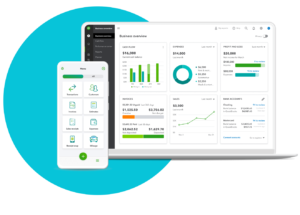Are you ready to dive into the fascinating world of invoicing software and uncover its remarkable functionality? In today’s fast-paced business landscape, efficiency is the key to success. And when it comes to managing your finances and ensuring a steady cash flow, invoicing software becomes your indispensable ally. This digital marvel isn’t just about generating bills and chasing payments; it’s a powerhouse that can revolutionize your financial operations.
Invoicing software is a digital tool designed to streamline the invoicing process for businesses of all sizes. It’s the digital evolution of the traditional paper invoice, allowing you to create, send, and manage invoices with remarkable ease and efficiency. Unravel the secrets of how invoicing software works, empower yourself with the knowledge to revolutionize your invoicing process, and propel your business to new heights of financial success.
To know how invoicing software works:
- Register and Set Up
- Create Custom Templates
- Add Client Details
- Generate Invoices
- Preview and Edit
- Send Invoices
- Track Payments
- Process Payments
- Manage Expenses
- Generate Reports
- Integrate with Accounting
- Ensure Data Security
- Provide Support
- Perform Updates
- Enable Accessibility
Recap
>>> MORE: How to Find Free Invoicing Software
1. Register and Set Up
To comprehend the inner workings of invoicing software, your journey commences with the fundamental step of registering for an account. At this inception point, you are prompted to furnish crucial business information, encompassing details such as your company’s nomenclature, physical address, and pertinent contact particulars.
Simultaneously, the software initiates the setup process, allowing you to imbue it with a personalized touch. Within this facet, you wield the ability to upload your company’s distinctive logo, seamlessly infuse your brand’s color palette, and meticulously input all pertinent contact data. This meticulous customization is not merely aesthetic; it contributes to the cultivation of a professional aura surrounding your invoices, significantly enhancing your brand’s visibility and resonance in the minds of your clientele.
2. Create Custom Templates
To familiarize yourself with the capabilities of invoicing software, craft personalized invoice templates that harmonize with your brand identity. These templates serve as the visual representation of your business, leaving a lasting impression on your clients. Tailor each template with your company’s logo, incorporating your distinctive brand colors and maintaining a consistent design aesthetic. This attention to detail reinforces your brand’s professionalism and recognition, making your invoices instantly identifiable.
3. Add Client Details
To understand how invoicing software operates, input your client’s information into the system. This includes vital data such as their names, contact details, billing addresses, and any special instructions or requirements they may have. The software allows you to efficiently save these client profiles for future use.
This functionality not only expedites the invoicing process for repeat customers but also significantly reduces the need for redundant data entry efforts. By storing these profiles, you can easily access and apply client information to invoices, ensuring accuracy and consistency in your billing practices.
4. Records All Financial Transactions
To fully harness the capabilities of invoicing software, generate invoices. Select the specific client for whom the invoice is intended. Once the client is identified, the software allows you to specify the details of the products or services provided.
This includes indicating the quantities, prices, and any applicable taxes associated with the transaction. As you proceed with filling in these details, the software truly shines by employing its automated calculation capabilities. These calculations are executed with precision, handling tasks such as computing subtotals, taxes, discounts, and the determination of the final total amount.
>>> PRO TIPS: How Accounting Software Works
5. Preview and Edit
Invoicing software provides crucial tools for creating precise and clear invoices. The preview feature allows for a thorough review of all invoice elements before finalization, helping to catch errors or discrepancies. Editing capabilities enable real-time modifications to maintain accuracy, ensuring transparent communication with clients. These features empower users to create impeccable invoices that enhance professionalism and streamline financial processes.
6. Send Invoices
To delve into the inner workings of invoicing software, one crucial step is sending invoices to clients through a multitude of channels. These channels include email, traditional mail, and even SMS, offering a diverse array of options for efficient payment processing. By embracing electronic delivery methods, the software accelerates the receipt of payments, transforming the invoicing process into a streamlined operation.
To master the intricacies of invoicing software, it’s imperative to configure automated reminders as part of your strategy. These reminders serve as gentle nudges to clients regarding pending invoices. This automated approach plays a pivotal role in enhancing punctual payments, which, in turn, fortifies your cash flow.
7. Track Payments
In invoicing software, the “Track Payments” feature offers real-time monitoring of invoice statuses, payments, and overdue notices. It provides precise financial insights and enables proactive follow-up on unpaid invoices. This feature enhances transparency and control over financial processes, facilitating data-driven decision-making and strengthening financial stability.
8. Process Payments
Invoicing software plays a pivotal role in facilitating payment processing for your business. By integrating with various payment gateways, it offers your clients multiple convenient payment options, enhancing customer satisfaction. Moreover, it ensures secure payment processing by employing encryption and secure servers to protect financial data. Real-time updates to financial records reduce manual data entry, making the payment process more efficient and accurate.
9. Manage Expenses
To truly comprehend the intricacies of invoicing software, it’s essential to expand its functionalities to encompass expense management. With this capability, you can seamlessly record and categorize all your business expenses, ushering in a new era of comprehensive financial management.
Efficiency is at the core of this feature, enabling you to meticulously track expenses. This, in turn, aids in the crucial aspects of budgeting and tax preparation. Furthermore, it offers a panoramic view of your financial health, allowing you to make informed decisions and secure a stable financial future.
>>> GET SMARTER: Billing Software: How to Choose
10. Generate Reports
To become familiar with the functionality of invoicing software, delve into these financial reports. They serve as your window into the financial health of your business, offering valuable insights that can guide your strategic decision-making processes. Whether you’re assessing your company’s profitability, tracking expenses, or monitoring the status of outstanding invoices, these reports provide the data-driven intelligence needed to steer your business toward continued success.
One of the significant advantages of utilizing invoicing software is the ability to access a diverse range of detailed financial reports. These reports encompass vital aspects of your business’s financial landscape, including profit and loss statements, expense summaries, and aging reports for outstanding invoices.
11. Integrate with Accounting
To ensure seamless operation, invoicing tools must function in harmony with your accounting software. This integration streamlines the transfer of financial data, eliminating redundant data entry and ensuring that your financial records remain accurate. This becomes especially crucial during tax season, when precision and efficiency are paramount.
Integrating accounting into your invoicing process not only enhances accuracy but also reduces the risk of errors. By connecting these two essential elements of your financial management, you create a more cohesive and efficient system that can save you time and resources in the long run.
12. Ensure Data Security
To optimize your use of invoicing software, it’s crucial to implement and maintain robust security measures. These measures are essential for safeguarding sensitive financial data, and you should give top priority to software that employs encryption, secure servers, and regular data backups. By doing so, you ensure that data security remains paramount in your invoicing processes.
This not only protects your business but also underscores the critical importance of safeguarding your clients’ confidential information. To harness the full potential of this technology, establish and uphold stringent security protocols. This includes selecting software that incorporates encryption, operates on secure servers, and routinely backs up your data. Such measures are not merely options but rather indispensable components of responsible data management.
13. Provide Support
With invoicing software, reliable customer support is paramount. Reputable invoicing software providers offer robust assistance to address challenges and inquiries, ensuring effective software utilization. Accessing responsive support guarantees guidance and assistance for efficient software navigation and optimization. It’s a crucial resource to help you harness the full potential of your invoicing software for streamlined financial management.
14. Perform Updates
To master the art of utilizing invoicing software, it’s crucial to perform regular software updates. This practice ensures that you stay up-to-date with the latest features, enhancements, and improved performance, all of which collectively optimize your experience.
By consistently updating your software, you can leverage the newest tools and technologies available on the market. This proactive approach not only enhances your software’s capabilities but also keeps you in sync with industry trends, ultimately contributing to your overall efficiency and effectiveness in utilizing invoicing software.
15. Enable Accessibility
Invoicing software’s accessibility features empower you to manage your finances from anywhere with an internet connection, thanks to mobile apps and cloud-based access. This freedom allows for seamless invoicing, payment tracking, and expense management, whether you’re in the office, on the move, or working remotely. Additionally, these tools provide user-friendly interfaces for convenient financial management, offering flexibility and efficiency in your invoicing tasks.
Recap
In summary, invoicing software serves as a fundamental pillar within your contemporary business operations, plays a pivotal role in simplifying financial procedures, and elevates overall operational efficiency. By delving deep into the intricate workings of invoicing software and grasping its multifaceted functionalities and associated advantages, you equip your business with the indispensable resources required for deftly handling a spectrum of financial tasks. This includes the proficient management of invoices, seamless facilitation of payments, meticulous oversight of expenses, and the ability to glean profound financial insights. In essence, invoicing software empowers your business to navigate the complex financial landscape with grace and precision, ushering in a new era of financial management and operational finesse.`













